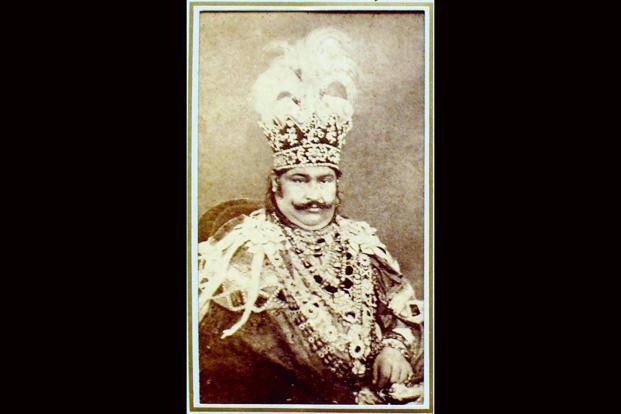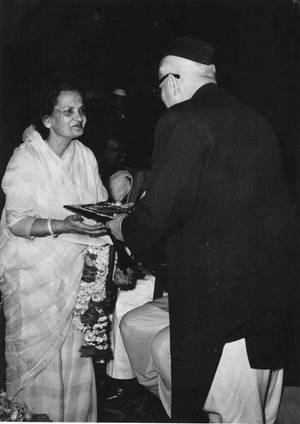Awadh, UTTAR PRADESH / BENGAL :

Of Wajid Ali Shah, and how a popular ‘thumri’ from another century reached us.
The Lucknow gharana of Kathak is famous for its repository of thumris. In fact, the very genre of thumri found immense patronage in the nawabs of Awadh. The last ruler, nawab Wajid Ali Shah, was a great lover of the arts. He wrote his first play, Radha Kanhaiya Ka Qissa, in 1843, when he was barely 21 years old. The British saw him as a debauched ruler wasting his wealth on entertainment.
Nineteenth-century India remembers the nawab as a romantic poet, a benefactor of the arts and a great lover of classical music and dance. By the time he ascended the throne in 1847, he had written two long romantic narrative poems (or masnavis) titled Bahr-E-Ishq (The Ocean Of Affection) and Darya-Yi-Ta’Ashshuq (The River Of Love). He adopted the pen name Akhtarpiya. An admirer of the Hindu god Krishna, he wanted to adapt these poems into a play in raas/rahas format.
Shah’s idea of staging these plays was beyond grandiose. According to the account of one Iqtidar-ud-daula who witnessed the play in February and March 1851: “The play was staged in 14 sessions (with intervals of one-two days between each session. The whole play took a month and 10 days to finish). Not every scene was staged in Qaisarbagh (a large complex housing gardens, manicured lawns and palatial buildings). Consecutive scenes were played out in different parts of the garden. In fact, some scenes were played out in different parts of the city.” It goes on to vividly describe the setting where canvas tents on bamboo frames were erected across the city along with “larger-than-life frames of scenery”. The elaborate preparations for each play took a whole year and cost £12,000 (around Rs10 lakh now) to produce.
Thus, Shah entertained himself with grand sessions of rahas. Here was a Shia Muslim king who consulted priests and celebrated Hindu festivals like Saawan, Holi and Basant Panchami with great pomp. He learnt Kathak from his court dancer-musician, Pandit Thakur Prasad. He appointed to his court the dancing duo of brothers Kalka and Bindadin Maharaj. The Kathak legend, Pandit Birju Maharaj, is a descendant of this family.
The nawab invested state wealth on arts and culture for the benefit and entertainment of his people. If the mounting expenses didn’t bother the British, Shah’s secular love for the arts and excessive indulgence did. They annexed his throne in 1854 and sent him into exile.
The book Asrar-I-Wajidi (1856) by Zahiruddin Bilgrami describes scenes of sorrowful locals who lined up on streets and wailed as the nawab left Lucknow. A caravan of a thousand people started from Lucknow on 13 March 1854 towards Calcutta (now Kolkata). For Wajid Ali Shah, there was nothing more painful than being separated from a place he loved so much and its people. His sorrow took the form of a song that spoke of displacement and loss. The song reflected an allegory to a human being’s last journey on this earth, when the body is carried on the shoulders of four pall-bearers.
Babul mora naihar chhooto jaaye
chaar kahaar mil, mori doliya sajaave
mora apna begaana chhooto jaaye
angnaa toh parbat bhayo, dehri bhayi bides
le ghar babul apno, main chali piya ki des
A large part of Shah’s writings have, unfortunately, been lost. Those that have remained, have luckily been preserved through music and dance by the descendants of his court musicians and dancers. This particular thumri reached us in its pristine condition from Kathak doyen Pandit Shambhu Maharaj. According to his first student, the late Maya Rao (in her autobiography Maya Rao—A Lifetime in Choreography, 2013), K.L. Saigal, who learnt the song from Pandit Shambhu Maharaj, spending months with him, seeing him perform it countless times and finally learning it, decided that he would sing it in the film Street Singer (1938).
In 1947, when Saigal died, All India Radio broadcast the song as a tribute. Thumri got a new lease of life on the classical music concert stage. The late Akhtaribai Faizabadi aka Begum Akhtar, Pandit Bhimsen Joshi and Kishori Amonkar, among others, immortalized the song. In the 1974 film Aavishkar, starring Rajesh Khanna and Sharmila Tagore, this song, sung by the late ghazal singer Jagjit Singh and wife Chitra Singh, weaves many scenes together. While Wajid Ali Shah might have been a political eccentric, he is credited with being a revivalist in the world of Hindustani classical music, dance and Urdu drama.
source: http://www.livemint.com / LiveMint / Home / by Veejay Sai / December 01st, 2017









